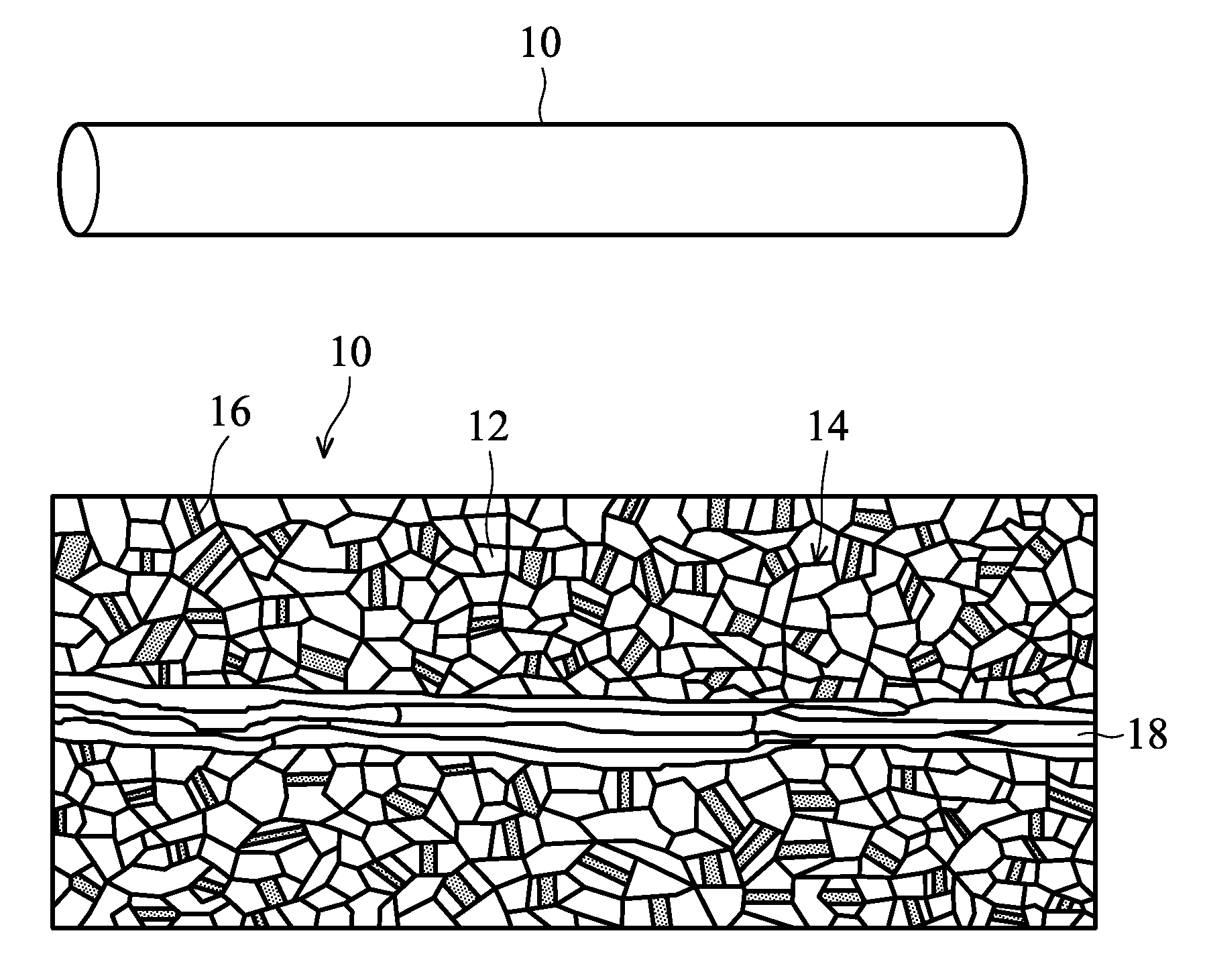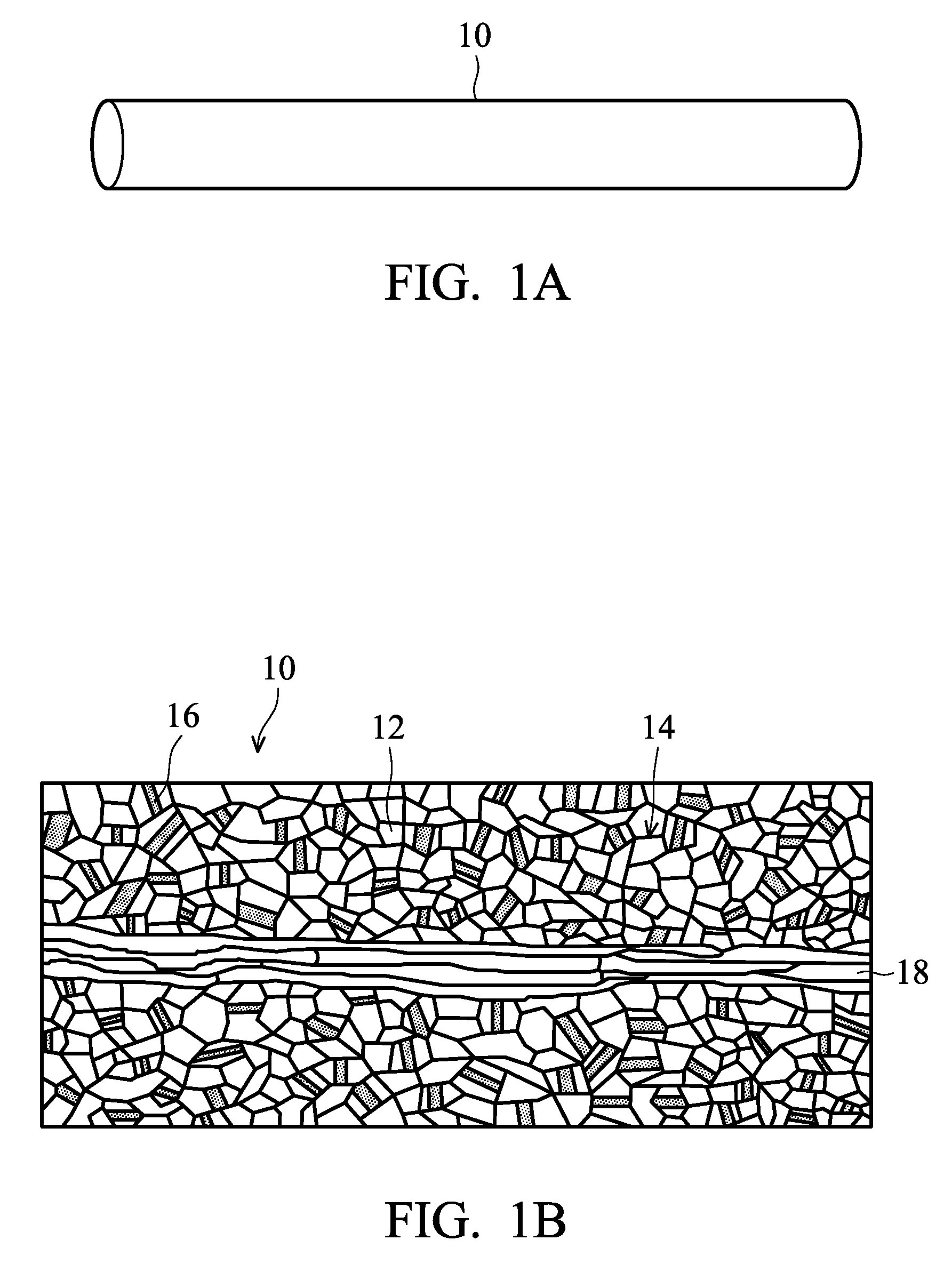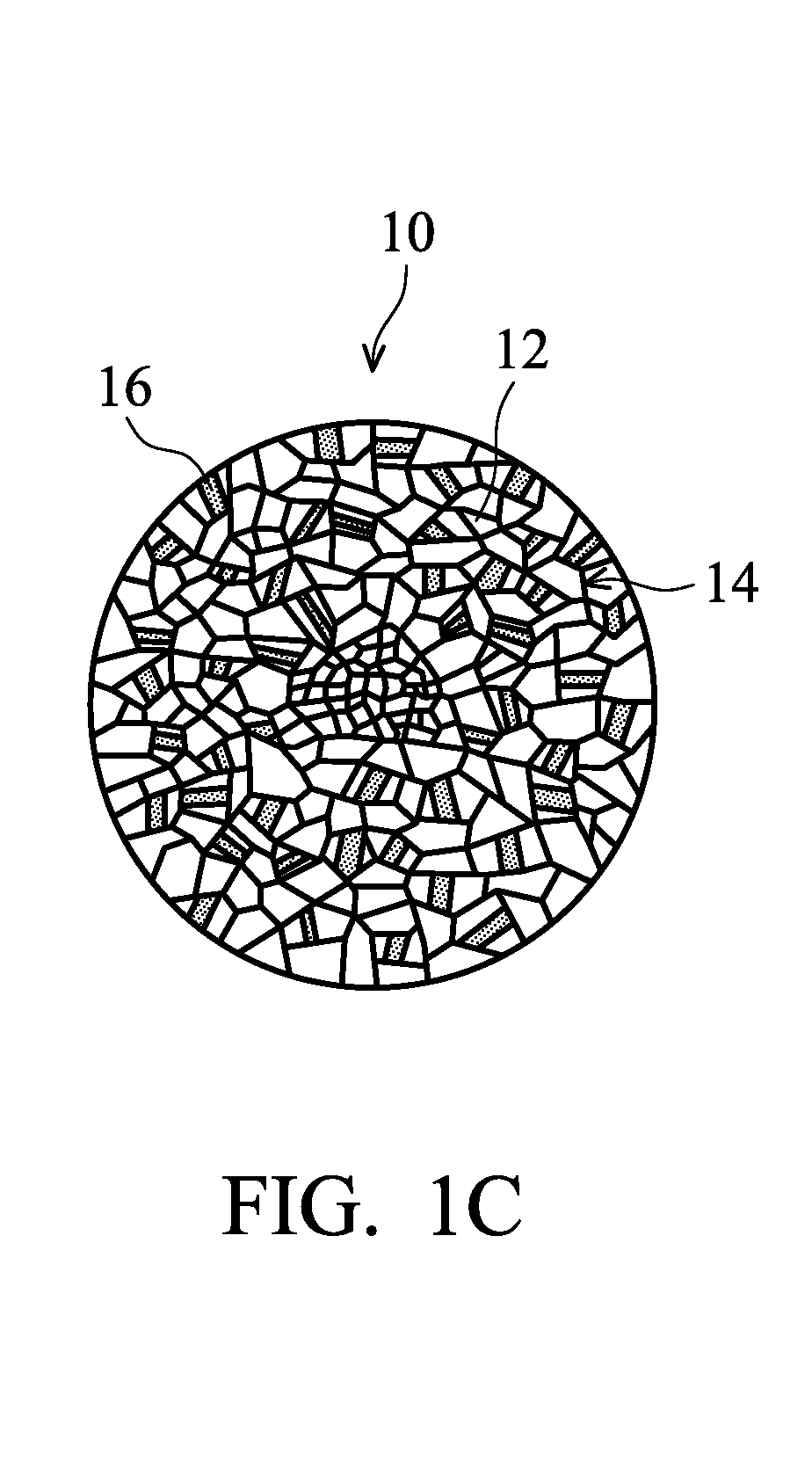Alloy wire and methods for manufacturing the same
a technology of alloy wires and manufacturing methods, applied in the direction of metallic material coating process, surface reaction electrolytic coating, solid-state devices, etc., can solve the problems of generating electron migration, local coarse grains formed, negatively affecting bonding strength
- Summary
- Abstract
- Description
- Claims
- Application Information
AI Technical Summary
Benefits of technology
Problems solved by technology
Method used
Image
Examples
example 1
[0084]A silver-8 wt % gold-3 wt % palladium alloy is smelted by high frequency electric smelting, followed by continuous casting to form a thick wire with a wire diameter of 6 mm. The thick wire becomes a fine wire with a wire diameter of 22.6 μm after a plurality of steps of wire drawing elongation and annealing treatment, followed by performance of the second-last step of wire drawing elongation, becoming a fine wire with a wire diameter of 20 μm. Next, the fine wire is annealed at 530° C. for 1.5 seconds, followed by performance of the last step of wire drawing elongation, becoming a fine wire with a wire diameter of 17.5 μm. Finally, the last step of the annealing treatment is performed on the fine wire at an annealing temperature of 570° C. for 4.8 seconds. Completing the last step of the annealing treatment, the fine wire is wound, and then an alloy wire product for wire bonding is complete.
[0085]In order to verify that plenty of annealing twin structures contribute to the exc...
example 2
[0109]A silver-8 wt % gold-3 wt % palladium alloy is smelted by high frequency electric smelting, followed by continuous casting to form a thick wire with a wire diameter of 6 mm. The thick wire becomes a fine wire with a wire diameter of 22.6 μm after a plurality of steps of wire drawing elongation and annealing treatment, followed by performance of the second-last step of wire drawing elongation, becoming a fine wire with a wire diameter of 20 μm. Next, the fine wire is annealed at 650° C. for 10 seconds, followed by performance of the last step of wire drawing elongation, becoming a fine wire with a wire diameter of 17.5 μm. Finally, the last step of the annealing treatment is performed on the fine wire at an annealing temperature of 700° C. for 60 seconds. Completing the last step of the annealing treatment, the fine wire is wound, and then an alloy wire product for wire bonding is complete.
[0110]As shown in FIG. 15A, a photograph of a Metallography structure along a lengthwise ...
PUM
| Property | Measurement | Unit |
|---|---|---|
| weight percent | aaaaa | aaaaa |
| weight percent | aaaaa | aaaaa |
| diameter | aaaaa | aaaaa |
Abstract
Description
Claims
Application Information
 Login to View More
Login to View More - R&D
- Intellectual Property
- Life Sciences
- Materials
- Tech Scout
- Unparalleled Data Quality
- Higher Quality Content
- 60% Fewer Hallucinations
Browse by: Latest US Patents, China's latest patents, Technical Efficacy Thesaurus, Application Domain, Technology Topic, Popular Technical Reports.
© 2025 PatSnap. All rights reserved.Legal|Privacy policy|Modern Slavery Act Transparency Statement|Sitemap|About US| Contact US: help@patsnap.com



